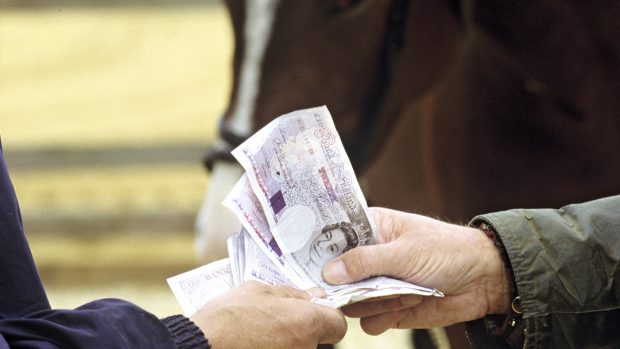If you’re selling a horse you have bred or produced, you may be scratching your head about how to price that horse appropriately. Too high, and you run the risk of not being able to easily attract a buyer – and most likely spending more than planned on the horse’s keep while you try to sell – but too low and you could end up losing money.
So what gives? There’s no easy answer to the question of what a horse should cost, but there are some important considerations that will help you price your horse appropriately.
Factor in your costs to date
It’s crucial to bear in mind the costs that you have already put into getting the horse to where it is now, especially if you have bred or produced it.
“A lot of people don’t do it to make money, but most can’t afford to lose money,” points out Anna Ross, who runs Elite Dressage, a sales, breeding and training centre in Devon.
If this is you, it can help to tally up the main expenses you’ve incurred. If you’ve bred the horse, there will have been the cost of semen and stud fees, plus things like veterinary packages, stud livery charges, foaling down fees, vaccinations and registration costs, X-rays at a certain age, and the day-to-day keep of the horse up to this point.
“It costs at least £10,000 to breed a foal,” says Nicky Callam, a “hobby breeder” who breeds two to three foals a year at her High Hoes stud in Hampshire.
“I don’t make any money out of breeding horses – I love it, but making a bonfire out of banknotes would be a cheaper hobby. People don’t realise the costs in production. The reality is that for most people buying young horses from breeders in this country, that breeder is subsidising their hobby.”
It may be that you can afford to sell without turning a profit, but it may also be important for you to recoup your costs, so it’s worth considering the minimum sales price you could afford without ending up out of pocket.
- Want to sell your horse? Book a horse for sale advert with Horse & Hound, powered by Whickr
Consider training milestones
If you’re selling a horse that you have produced yourself, or had professionally produced on your behalf, the level of training they have reached should help determine how much they could sell for.
But bear in mind that horses’ value does not increase in a smooth upward trajectory as they get older. Reaching certain milestones in their development should elevate their worth considerably.
“Going from unbacked to backed leads to a spike in value because initially you couldn’t ride it and now you can,” Anna says.
“It’ll go up again as a four-year-old if it goes out to its first shows, but then generally between four-and-a-half and six years old, there’s not much increase in value because it’s based on the horse’s promise to go on and perform, rather than proof. Learning flying changes and half steps are the money makers in dressage, and you might see that at six or seven, if professionally produced.”
Don’t underestimate the importance of a competition record when it comes to pricing. Even the most exciting, talented prospect is a gamble for a buyer if it does not have a solid competition record. Getting a horse out and about is a great way to help advertise it as well.
Pin down your priorities
As well as considering the horse’s merits and your financial situation, it’s wise to spend some time mulling over your ideal timescale, and how quickly you want – or need – the horse to be sold.
If a speedy sale is more important than the price achieved for the horse, be prepared to drop your asking price to help sell in a timely fashion. If, however, you don’t need to sell the horse right now, and achieving the best price possible is your priority, you can afford to be more ambitious and wait for the right buyer if necessary.
This is also the point where you should consider the costs you will incur the longer your horse goes unsold. Work out the amount of time you can afford to continue to pay the horse’s running costs and factor this into your pricing.
Keep up with the market
Take a good look at the current horses for sale market to see what other comparable horses are currently priced at. The value of a horse is ultimately whatever a buyer is prepared to pay for it, and this will be influenced by supply and demand. If there are plenty of other similar horses available to buy, it may be harder for yours to stand out, meaning that competitive pricing is important to attract buyers.
Conversely, when supply is limited and demand is high, buyers may be prepared to pay more, and you may be able to be more ambitious with price.
This also applies when selling on a previously purchased horse; the world of horses for sale is constantly changing, so take the time to research current market conditions, and use this to help you decide on a fair price for your horse.
- Want to sell your horse? Book a horse for sale advert with Horse & Hound, powered by Whickr
You may also be interested in…

How to improve the value of your horse – and help him find the right home

How to write a horse for sale advert that will sell your horse to the right home

How to prepare your horse for a quick and hassle-free sale

How to avoid legal pitfalls when buying and selling horses

Subscribe to Horse & Hound magazine today – and enjoy unlimited website access all year round
Horse & Hound magazine, out every Thursday, is packed with all the latest news and reports, as well as interviews, specials, nostalgia, vet and training advice. Find how you can enjoy the magazine delivered to your door every week, plus options to upgrade your subscription to access our online service that brings you breaking news and reports as well as other benefits.




